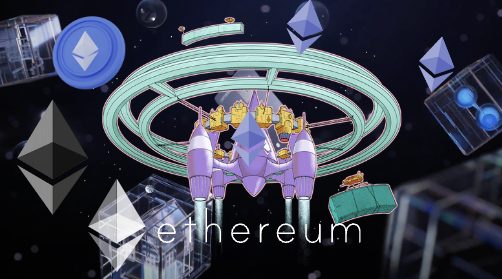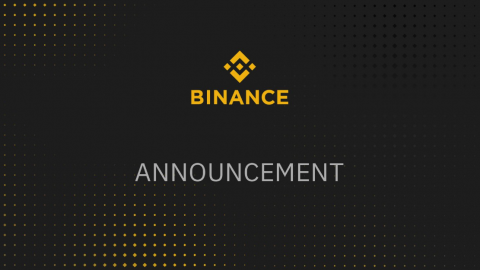The crypto community is waiting on tenterhooks for an event that has long been promised and delayed, eluding predictions for years running now. We are of course talking about the Ethereum Merge, which is now due to occur in less than a month’s time – on Sept. 15, to be exact.
One key issue related to the Merge is something called the Triple Halving, a grouping of several phenomena likely to have a big impact on the cryptocurrency’s short-to-medium-term future. What exactly is the Triple Halving? Read on to find out.
The Ethereum Merge: A Simple Breakdown

Begun as a PoW blockchain in 2015, Ethereum has long struggled with slow transaction speeds and tremendous amounts of energy waste in its method for validating new blocks, and the Ethereum Merge, which should transform it into a more energy-efficient chain, is finally here in mid-September after years of development and delays.
To put things in perspective, the Ethereum PoW mainnet has a maximum limit of about 30 transactions per second (TPS); meanwhile, a rival chain like Solana that runs on the newer PoS consensus mechanism can theoretically handle up to 65,000 TPS.
In December 2020, Ethereum finally launched its Beacon Chain, which runs on a PoS consensus mechanism and is much more scalable and environmentally friendly. The idea has been to eventually merge the Ethereum mainnet with the Beacon Chain through an upgrade that would also make it economically unviable for ETH miners to keep their operations going on due the deployment of a so-called difficulty bomb in the algorithmic complexity of PoW mining. This would force ETH miners to rather allocate their holdings to the Beacon Chain for staking, the Ethereum blockchain to make the jump from PoW to PoS and thereby lowering the energy consumption by 99.95%.
Progress has been incremental, with many upgrades and testnet trials leading to this moment where the Merge is finally less than a month away. Following the big day, a series of other updates, such as sharding, will tackle issues ranging from scalability to withdrawals of staked ETH.
How Does the Ethereum Triple Halving Work?
Similar to the way Bitcoin halvings every four years place deflationary pressure on that cryptocurrency, the Triple Halving will place deflationary pressure on Ethereum. In this case, however, the impact will be coming from three directions. These include a dramatic drop in the issuance of ETH, burning, and significant quantities of staked ETH that will remain locked up for the better part of the next 12 months.
Part 1: Decreased Issuance
Under the new PoS system, the rewards for validating new blocks of Ethereum are set to substantially fall. Annual issuance of ETH is expected to drop from 4.3% to 0.4% in the wake of the Merge, according to ex-blockchain engineer Montana Wong. The daily issuance will drop from around 15,000 ETH to something closer to 1,500 ETH.
Additionally, as a result of the increased efficiency of the chain following the Merge, there will be decreased daily sell pressure on ETH coming from miners. Since miners will need less capital to secure the energy used for their operations, the daily incentives for them to flood the market with ETH go way down – to the tune of 10x.
Part 2: Burning
Last year’s EIP-1559 update during the London Hard Fork introduced a potentially deflationary mechanism to the Ethereum network, by burning a portion of each transaction fee under certain conditions. The continued burning due to this update will add to the general deflationary weight falling on Ethereum.
Part 3: Staked Ethereum Withdrawals
The PoS consensus mechanism that will power Ethereum after the Merge relies on people staking their ETH through validators, who are in turn responsible for securing the next block on the chain. Even before the Merge, people have been able to get involved in staking. Those who put up their ETH are rewarded, and those staking rewards are predicted to go up after the Merge by 100% or more.
At the moment, it’s not possible to withdraw staked ETH, and this will continue to be the case until the shard chains are implemented. Currently, Ethereum’s developers are forecasting that withdrawals of staked ETH will become possible six to 12 months after the Merge – and even then only in queued form.
The effect of this growing mass of locked-up ETH is yet another deflationary pressure that will impact the value of the cryptocurrency over the course of the coming year.
Ethereum Triple Halving’s Impact on ETH Price

While the following is not financial advice, we can report the obvious, which is that a reduced supply, or decreased rate of supply, would tend to have the effect of boosting prices, ceteris paribus (all other conditions remaining the same).
This is very much the view of the man behind the Triple Halving theory, Nikhil Shamapant, who believes Ethereum may stand to benefit even more from the Triple Halving than Bitcoin does through its 4-year halving cycles that cut BTC mining rewards by 50%.
Of course, no cryptocurrency can be viewed in isolation, and Ethereum is no different, being impacted by a range of macroeconomic factors such as record inflation, which has led to a technical recession in the U.S. and a resulting quantitative tightening strategy by the Federal Reserve. This has seen markets tumble, and without an end to interest rates in sight, price predictions remain gloomy.
Simply put, no one really has any idea how this will play out amid the current macro climate. As we all know, the economy has entered into a bear market, which has had a disproportionate effect on crypto – a risk-on asset. Additionally, there are some who speculate that the Merge is already priced in and can lead to price drops, while other pundits feel it won’t be priced in until sometime a ways after it occurs.
Whatever approach you choose to take towards this looming moment in crypto, remember that it’s essential to store your crypto offline in a hardware wallet, as hacks and scams are on the rise every year, and this one is no different.
Check out the CoolWallet Pro if you’re a sophisticated crypto user looking to use DeFi and NFTs in enhanced cold storage, or the entry-level CoolWallet S if you’re new to crypto or just looking for an easy-to-use HODL hardware wallet.




